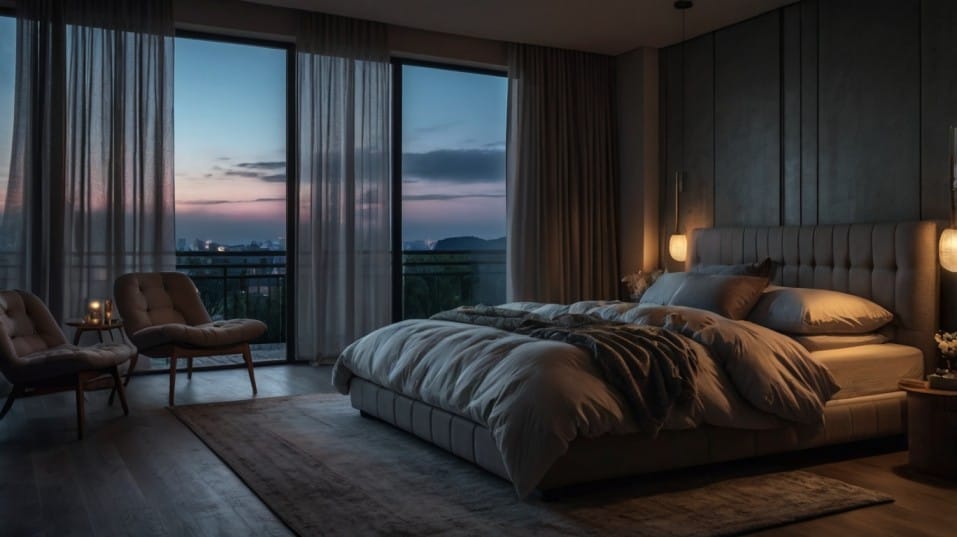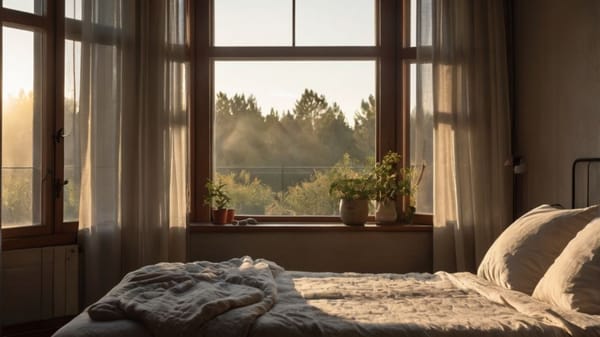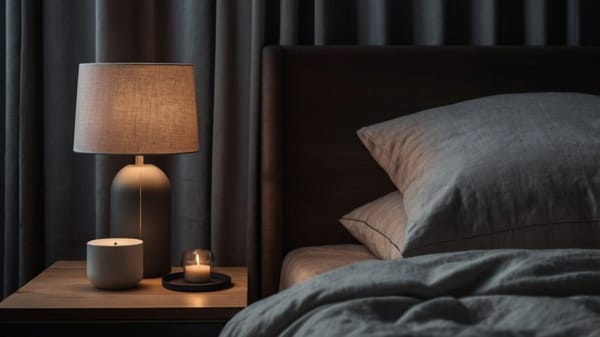How to Prioritize Recovery Sleep Without Oversleeping
Unlock recovery sleep that boosts focus, energy, and performance—without oversleeping. Discover simple, science-backed strategies that work.

What if better recovery didn’t mean more sleep—but smarter sleep? If you’ve been chasing extra hours to boost focus, performance, or energy, you’re missing the real advantage.
True recovery happens when you align your sleep with your body’s natural rhythm—not when you hit snooze one more time.
Whether you're training, studying, or just trying to feel more human by 10 a.m., here's how to build powerful, effective recovery sleep into your nights—without oversleeping your mornings.
What Recovery Sleep Really Does
Every night, your body cycles through multiple sleep stages: light sleep, deep sleep, and REM. Deep sleep is your repair zone. It’s when muscle tissue rebuilds, growth hormone peaks, and your immune system resets.
REM is the cognitive cleanup crew—it helps consolidate memories, balance emotions, and boost creativity and learning. You need both to function at your best.
But here’s the trick: these cycles aren’t spread evenly through the night. Deep sleep hits harder in the early hours. REM stacks more in the later ones.
If your schedule is erratic or you crash late and sleep in, you may miss one end of that cycle. That's how you wake up technically “well-rested” but still groggy or mentally off.
Recovery sleep isn’t just about “more”—it’s about right timing, right depth, right consistency.

Lock in Your Sleep Timing
Your sleep quality depends far more on when you sleep than on how long. If your sleep schedule swings wildly, even solid nights can leave you foggy. That’s why consistency isn’t just helpful—it’s essential.
Why Consistency Beats Catch-Up
First priority: fix your sleep window. Your brain and body operate on a 24-hour internal clock called the circadian rhythm.
It craves regularity. The more consistent your sleep-wake times, the more efficiently your body transitions into recovery mode at night.
Pick a target bedtime and wake-up time—and stick to them within a 30-minute window, even on weekends. The goal isn’t rigid perfection.
It’s rhythm. Consistency primes your body to enter deep sleep faster and stay there longer, without dragging through transitions.
Trying to “make up” for lost sleep by oversleeping the next morning can actually backfire. It confuses your internal clock and makes it harder to fall asleep the next night.
Instead, if you’ve had a rough night, add a 20-minute power nap during the day or go to bed a bit earlier. Keep mornings consistent. That’s how you realign.
Get Serious About Light Control
Light is the strongest external force that controls your internal clock. To build better recovery sleep, you need to treat light exposure as deliberately as you treat your training or nutrition. That starts first thing in the morning.
Use Morning Light to Your Advantage
Light is your circadian system’s on/off switch. Morning light cues alertness. Evening darkness cues melatonin release. Use that to your advantage.
Step outside within an hour of waking—even five to ten minutes helps reset your clock. Natural sunlight—even through cloud cover—is 10x stronger than indoor lighting.
It tells your brain, “The day has started,” which helps regulate energy levels, mood, and sleep pressure later on.
Dimming Down at Night
At night, reverse the approach. Two hours before bed, start dimming lights around your space. If you’re using screens, enable night mode or use blue-light-blocking glasses.
Blue light delays melatonin, which delays sleep onset. You don’t need a cave, but you do need contrast: bright mornings, dim nights. That’s the cue your body understands.
Eat and Train in Sync With Sleep
What and when you eat, how intensely you train, and how close to bedtime you do either—all of it plays a role in how well you sleep. Recovery doesn’t start when your head hits the pillow; it starts hours earlier with the choices you make.
Food Timing and Quality Sleep
Your evening habits matter more than you think. Food, workouts, and stimulants can all work for—or against—your recovery sleep.
Heavy meals late in the evening? They ramp up digestion and raise core temperature—two things that disrupt deep sleep.
Caffeine after 2 p.m.? It lingers in your system longer than you feel it, often stealing sleep hours without your noticing.
Training With Recovery in Mind
Night workouts? They’re fine—as long as they wrap up 3+ hours before bed. Otherwise, elevated cortisol and body temp make it hard to drop into deep sleep when it counts.
If you want next-level recovery without needing extra sleep, align your lifestyle with your body’s natural winding-down process. That’s where the compound benefits kick in.
Build a Wind-Down Routine That Actually Works
You don’t need a 14-step evening ritual. You need one or two habits that signal your brain: “Time to power down.”
This could be five minutes of breathwork, a short walk, a warm shower, reading something non-stimulating—whatever pulls you out of performance mode. Keep it simple. Keep it consistent.
This is about downshifting, not optimizing. No screens. No performance goals. Just space to transition from go-mode to rest-mode. That mental signal helps your body ease into deeper stages of sleep, so you wake up truly recharged.
Use Recovery Sleep Strategically—Not Excessively
There’s a reason you feel worse after sleeping 10 hours than you do after 7.5 good ones. Oversleeping messes with your rhythm. It’s like flooding your engine to fix a sputter.
Use strategic “sleep extensions” only when needed—like after intense training blocks, travel, or illness.
An extra 30–60 minutes occasionally can help you rebound. But the long game? That’s about quality sleep on a consistent schedule, not chasing more hours.
And if you’re regularly clocking 9+ hours but still feeling wiped, your problem isn’t lack of sleep—it’s sleep fragmentation, poor timing, or low quality. Fix the fundamentals before adding more.
Optimize Your Environment
You can have perfect timing, great habits, and still struggle to sleep if your environment works against you. Your bedroom should support rest, not stimulation. The good news? Small changes here go a long way.
Easy Wins for Better Sleep
This doesn’t mean dropping thousands on a new mattress. Start with what matters most:
- Cooler temps: Aim for 60–67°F (16–19°C). Your body needs to cool slightly to enter deep sleep.
- Block light: Use blackout curtains or a sleep mask. Even small light leaks disrupt melatonin.
- Cut noise: Use earplugs or a white noise app if needed. Even mild noise disrupts sleep cycles.
- Declutter: A calm, clean space supports a calm, clear mind. Your sleep environment should feel like a signal, not a stimulus.
Set it and forget it. A sleep-optimized space does the work for you—night after night.
Final Thoughts
You don’t need more sleep. You need better sleep. Recovery sleep works when it’s aligned with your biology, your habits, and your environment—not when it’s forced or dragged out.
Anchor your timing. Get light early, dim it late. Move your body, fuel it smartly, and create space to wind down. Skip the sleep hacks and focus on rhythms that actually stick.
Start tonight. Turn off the noise. Set your schedule. Choose habits that respect your need to recover—because better sleep doesn’t just help you rest. It helps you win the next day.




